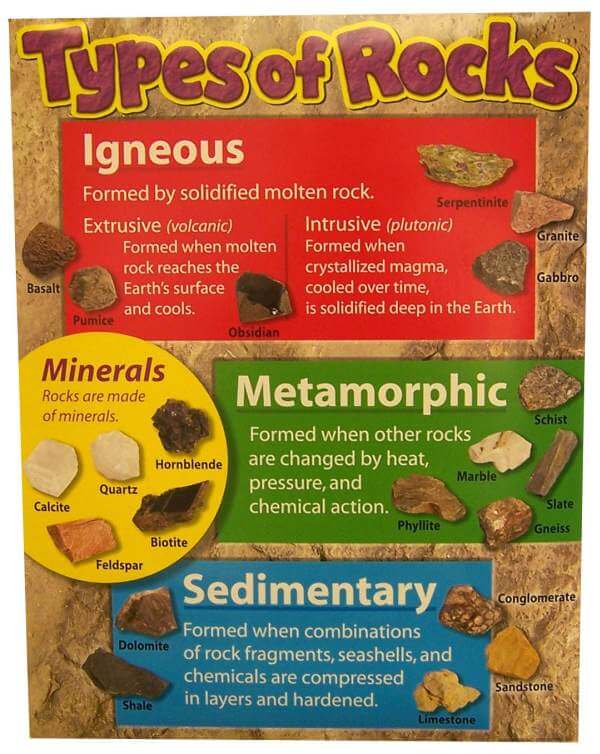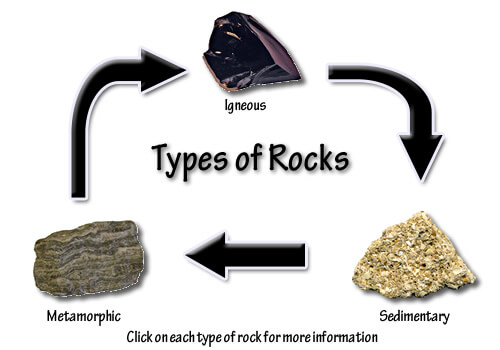Three Classes of Rocks.—The rocks are divided into three great classes:
- Sedimentary rocks, made of fragments of older rocks more or less water worn or ground to powder, and then spread out and deposited in layers of gravel, sand, mud, etc., to be later consolidated by pressure and natural cementing. The material may also consist more or less of shells of animals or plants, or of minerals formed as precipitates and then settling to the bottom of bodies of water. Sometimes fine-grained stuff has been spread out by air-currents and then consolidated.
- Igneous rocks, formed by the cooling of melted rock matter until it has become solid.
- Metamorphic rocks, made out of rocks of classes I and II by geological changes.
Arrangement of Sedimentary Rocks
A careful study of sedimentary rocks, as seen outcropping or exposed in cliffs, shows an orderly arrangement of the layers, suggesting a rough process of building, interrupted in some places, and the results destroyed in others. By noting the succession of the different kinds or rocks over the whole earth, an ideal section of the earth’s crust from top to bottom of the sedimentary rocks has been constructed.
The idea suggested in this is that, as soon as a solid earth was formed and weathering began, sedimentary rocks began to be formed; and this process was continued age after age, not over the whole surface of the earth simultaneously, but in certain regions; also not continuing throughout the ages, in one place, but changing with the movements of the earth’s crust.
Fossils
Fossils are petrified remains of plants and animals, found in sedimentary rocks; they are not found in igneous rocks, and but rarely in metamorphic rocks. They form a fragmentary record of the living beings that have inhabited the earth. The first distinct fossils are of simple forms of life; but since they are not so simple as some that exist now, it is inferred that still simpler forms may have existed at an earlier period, their bodies being too fragile to leave any remains.
From that point upward, the rocks contain fossils of plants and animals more and more highly organized.
Life Eras
Taking into account the foundation rocks, formed at a time when life was perhaps impossible or left doubtful records in rocks that have undergone so many changes, eras are distinguished, in order from above downward:
Eras Characteristic Animals
- Recent Life, or Cenozoic Mammals, man.
- Middle Life, or Mesozoic Reptiles.
- Ancient Life, or Paleozoic Amphibians, fishes invertebrates.
- Dawning Life, or Eozoic Not certainly known.
Since every fossil-bearing sedimentary rock formation has fossils peculiar to itself, the geologist is able to determine the relative age of such rocks by studying the fossils found in them.

